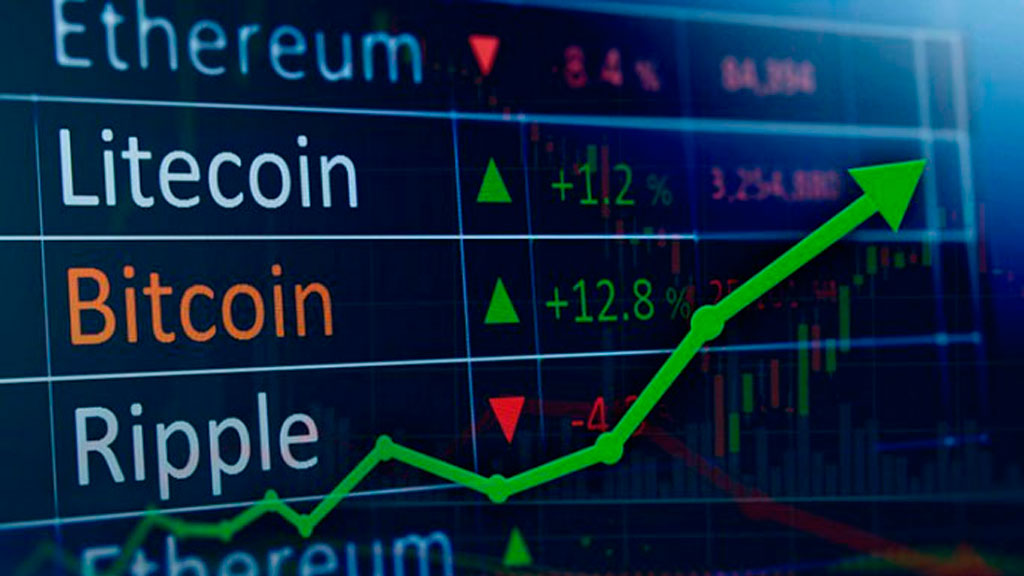Institutional Interest in Crypto Expected to Push Market Value Over $10 Trillion by 2030
29.08.2024 12:30 1 min. read Alexander Stefanov
The Q2 research report by OKX and The Economist reveals that digital assets are rapidly attracting interest from institutional investors, with their market value projected to surpass $10 trillion by 2030.
Currently, the total value of the cryptocurrency market stands around $2 trillion.
The report highlights a growing shift in asset allocation toward digital assets, forecasting that institutional investors will boost their digital asset holdings from the current range of 1%-5% to 7% by 2027.
It notes that institutional investors are keen on expanding their portfolios beyond traditional cryptocurrencies to include new investment options such as mortgages, crypto derivatives, and tokenized bonds. However, it also points out that inconsistent regulation and fragmented liquidity could pose challenges to broader adoption.
The rising interest from investment firms and banks is driving the creation of new investment products, including exchange-traded funds (ETFs), exchange-traded notes, blockchain-based platforms utilizing decentralized Web 3.0 technology, and even crypto phones. Thijs van Boven, head trader for digital assets at VanEck, emphasized the growing demand for these products and their importance in addressing market needs.
Ataf Ahmed, CEO of Graphene Investments, remarked:
“As real-world assets become tokenized, digital assets will increasingly become a core part of most portfolios. Securities, bonds, and central bank digital currencies will eventually be integrated into blockchain technology.”
-
1
Polygon Breaks from Decentralization as Sandeep Nailwal Assumes Full Control
11.06.2025 20:00 2 min. read -
2
Nvidia CEO Urges UK to Invest in AI Infrastructure or Risk Falling Behind
10.06.2025 9:00 1 min. read -
3
KuCoin Plants Its Flag in Bangkok With a Licensed Thai Exchange
14.06.2025 13:00 1 min. read -
4
Why Gold Could Be the Smart Play Amidst US Debt Surge
11.06.2025 11:00 1 min. read -
5
Warren Buffett Narrows His Bets as He Prepares to Step Down
14.06.2025 16:00 2 min. read
What Brian Armstrong’s New Stats Reveal About Institutional Crypto Growth
Coinbase CEO Brian Armstrong has spotlighted a significant acceleration in institutional crypto adoption, driven largely by the surging popularity of exchange-traded funds and increased use of Coinbase Prime among major corporations.
Whales Buy the Dip as Retail Panics: This Week in Crypto
The latest market turbulence, fueled by geopolitical tensions and investor fear, offered a textbook case of how sentiment swings and whale behavior shape crypto price action.
What Will Happen With the Stock Market if Trump Reshapes the Fed?
Jefferies chief market strategist David Zervos believes an upcoming power shift at the Federal Reserve could benefit U.S. equity markets.
U.S. Bank Advises Clients to Drop These Cryptocurrencies
Anchorage Digital, a federally chartered crypto custody bank, is urging its institutional clients to move away from major stablecoins like USDC, Agora USD (AUSD), and Usual USD (USD0), recommending instead a shift to the Global Dollar (USDG) — a stablecoin issued by Paxos and backed by a consortium that includes Anchorage itself.
-
1
Polygon Breaks from Decentralization as Sandeep Nailwal Assumes Full Control
11.06.2025 20:00 2 min. read -
2
Nvidia CEO Urges UK to Invest in AI Infrastructure or Risk Falling Behind
10.06.2025 9:00 1 min. read -
3
KuCoin Plants Its Flag in Bangkok With a Licensed Thai Exchange
14.06.2025 13:00 1 min. read -
4
Why Gold Could Be the Smart Play Amidst US Debt Surge
11.06.2025 11:00 1 min. read -
5
Warren Buffett Narrows His Bets as He Prepares to Step Down
14.06.2025 16:00 2 min. read


